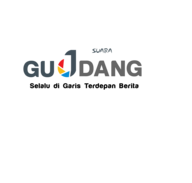That, at least, is the implied conclusion of a viral investigation published last week by Consumer Reports on levels of lead and other heavy metals in popular protein supplements. Many brands, the article reported, “carry troubling levels of toxic heavy metals” including lead: “For more than two-thirds of the products we analyzed, a single serving contained more lead than CR’s food safety experts say is safe to consume in a day — some by more than 10 times.”
It is a finding that, in a country in the grips of “protein mania,” has spread like wildfire across both traditional and social media. The problem is that it’s more scaremongering than science — not because there isn’t some lead found in these protein powders, but because Consumer Reports uses an almost impossibly low level of lead exposure as its baseline, which makes its findings seem much scarier than they really are.
For its investigation, Consumer Reports, which has long performed independent tests of lead levels in different foods, baby foods, and spices, tested 23 protein powders and pre-made protein shakes for heavy metals, and then compared their findings to lead levels that “CR’s food safety experts say is safe to consume in a day.” That level is the so-called maximum allowable dose level (MADL) of 0.5 micrograms per day that was established by California’s Prop 65, a 1986 law designed to inform consumers about exposure to harmful chemicals in everyday products.
The results were damning for many of the products. Sixteen were found to contain unsafe levels of lead, with plant-based supplements faring particularly badly, including Huel’s Black Edition protein powder, which was found to exceed safe levels by a shocking 1,288 percent, and deemed by the magazine as unsafe to consume.
Lead exposure, to be clear, is a very serious health threat. It can stunt brain development in children, leading to lifelong disability. It can also damage the nervous system and kidneys, and increase the risk of heart disease and stroke in adults. It is considered such a dangerous substance that the general expert opinion is that there is no truly safe level of exposure.
But while Consumer Reports’ figures sound scary — 1,288 percent! — the devil is in the details, and specifically, the choice to use Prop 65 levels as the baseline.
To understand why, you need to understand the science of lead safety limits. The Food and Drug Administration has launched an initiative to bring lead levels “closer to zero” to mitigate children’s exposure. But zero itself might be unachievable. Lead is naturally present in numerous foods, and found especially in some plants, which absorb lead from contaminated soil, air, and water. The FDA’s studies of dietary lead exposure show that the average American adult consumes between 1.7 and 5.3 micrograms daily through their normal food intake.
Exposure to some amount of lead — be it through food, air, water, or the built environment — is unavoidable, so regulatory agencies tend to use estimates of relatively safe exposure called “reference levels” to guide policies. Such estimates take the lowest amount of lead that is known to be harmful and divide it by a so-called safety factor, a sort of statistical buffer.
The FDA, as part of its “Closer to Zero” campaign and using a 10X safety factor, has set its reference levels at 2.2 micrograms per day for children and 8.8 for women of childbearing age (to protect against accidental fetal exposure). This means that regularly exceeding these might pose health risks.
Future Perfect
Explore the big, complicated problems the world faces and the most efficient ways to solve them. Sent twice a week.
Felicia Wu, professor of food safety, toxicology, and risk assessment at Michigan State University, told me that the reference levels for lead represent “an acceptable level in food or water, based on a combination of reducing risk to populations while making it economically feasible for water utilities or food companies” to operate.
California’s Prop 65, however, used a far higher 1,000X safety factor (1,000 times lower than minimal known unsafe levels) to arrive at 0.5 micrograms of lead per day as its reference level.
This is an unachievable safety target, significantly below the lead you get from average daily food consumption, especially for people who eat more legumes, fruits, and vegetables, all of which grow in the soil and inherently pull in some amount of heavy metals. As one clinical dietician I spoke with told me of the Prop 65 level: “You literally can’t eat food from the Earth if you want to achieve this.”
Drying and processing foods can further concentrate those heavy metal levels. Take Huel Black Edition powder, which has pea protein as a principal ingredient. Consumer Reports’s tests show that one serving of Huel has 6.3 micrograms of lead, or about 12.6 times more than Prop 65’s reference level 0.5. That’s how the magazine gets to the astounding claim that Huel contains around 1288 percent of the maximum safe dose of lead.
But compared to the FDA’s more realistic numbers, 6.3 micrograms is 71.6 percent of the reference level for women of childearing age, meaning it’s safe even for at-risk individuals. For adult males, who are more likely to glug protein shakes, the risk is negligible. Children, with some exceptions, shouldn’t be consuming protein powder at all.
And that’s one of the two products with the highest levels of lead — the other is Naked Nutrition’s Vegan Mass Gainer — which means that every single one of the 23 products that Consumer Reports tested is relatively safe by FDA standards. If you’re doing the math at home and have found that adding 6.3 micrograms from a Huel shake to the high end of average daily intake at 5.3 micrograms would take you beyond the reference level for at-risk people, remember that the reference level is ten times less than the minimum observably unhealthy amount. There’s a built-in cushion. (While the CR report noted that an FDA spokesperson told them that there is “sufficient evidence” that the 8.8 micrograms of lead level should apply to all adults, not just women of childbearing age, that would still mean that even the products with the most lead would fall beneath that standard.)
And it bears noting that Consumer Reports’s tests showed levels of lead that were higher than tests of Huel carried out by the National Sanitation Foundation, an independent testing body, which showed that a serving of Huel Black came in under 3.6 micrograms. And while it’s true that plant-based protein powders like Huel do have higher lead levels than whey protein that comes from dairy, the differences are trivial if we get away from the Prop 65 baseline. Switching from plant-based to animal-based protein powders to reduce lead exposure, as Consumer Reports tells readers to consider doing, is an unnecessary precaution.
It’s regulation, not contamination
The bottom line is that Consumer Reports’s protein lead scare is — pardon the pun — a big nothingburger. But the questions still remain: Are protein supplements completely safe? And should you be consuming them? The answers are a little more complicated.
Consumer Reports might be overstating the threat posed by lead in protein powders, but their reporting does bring up an important problem that applies to all supplements: They are troublingly under-regulated in the United States.
The FDA is responsible for food supplement safety just as it is for food safety. But the two operate under completely different regulatory regimes.
While an entire cottage industry of health and fitness gurus exists purely to convince people that they need more protein, most Americans already get more than enough of it through their normal diet.
Food is governed by the Federal Food, Drug, and Cosmetic Act, under which all foods have to be tested for safety before being allowed to be sold to the public. But supplements fall under the Dietary Supplement Health and Education Act (DSHEA) of 1994, which states that supplements like protein powders do not require pre-market approval. It is then up to the government to test or follow up on complaints, and remove offending products found unsafe, all of which it must do with constrained staffing and budget. In 2024, the FDA inspected only 600 of the over 10,000 supplement manufacturers that sell products to Americans.
This means that while supplements might be legally regulated, most are de facto unregulated. Unsurprisingly, the supplement market has boomed in the wake of DSHEA, widely considered to be the result of lobbying by the supplement industry. The result has exposed consumers to supposedly healthy products whose health benefits (and risks) are for the most part unverified.
William Masters, a food economist at Tufts University’s Friedman School of Nutrition, told me that to call supplement companies snake oil salesmen may be too kind. “If I sell snake oil as oil for your salad dressing, it has to have snake oil in it,” he said. “If I sell snake oil as a supplement, it doesn’t even have to have snake oil in it.”
Others offered a more tempered assessment. Kevin Klatt, a nutrition research scientist at the University California Berkeley, told me that he would steer consumers who insist on protein powders toward larger and more reputable brands, which are more likely to, like Huel, have done outside testing like getting NSF certification — and are more concerned about bad press and potential litigation.
But all the experts I spoke with for this story argued that supplements should be more strongly regulated. Rob Shewfelt, a professor emeritus of food science and technology at the University of Georgia and the author of In Defense of Processed Food told me that it’s important for the public to recognize that the problem with supplements is not that they are processed foods, but that they are not regulated as stringently as other foods — including actual processed foods. “Supplements [in the US] wouldn’t be trusted by me as a food scientist,” he said. It’s the regulatory process, not whether something is processed, that matters.
And then there’s the question of whether people need to be consuming protein supplements in the first place. While an entire cottage industry of health and fitness gurus exists purely to convince people that they need more protein, most Americans already get more than enough of it through their normal diet. Supplements, as their name suggests, exist to supplement deficiencies in diets, but the average person, including the average athlete, can quite easily meet protein targets on a diet without supplements, including a plant-based one.
So no, your protein shakes are not giving you lead poisoning. And if you want to have them, that’s probably fine. Whether you need to is a different story.















































